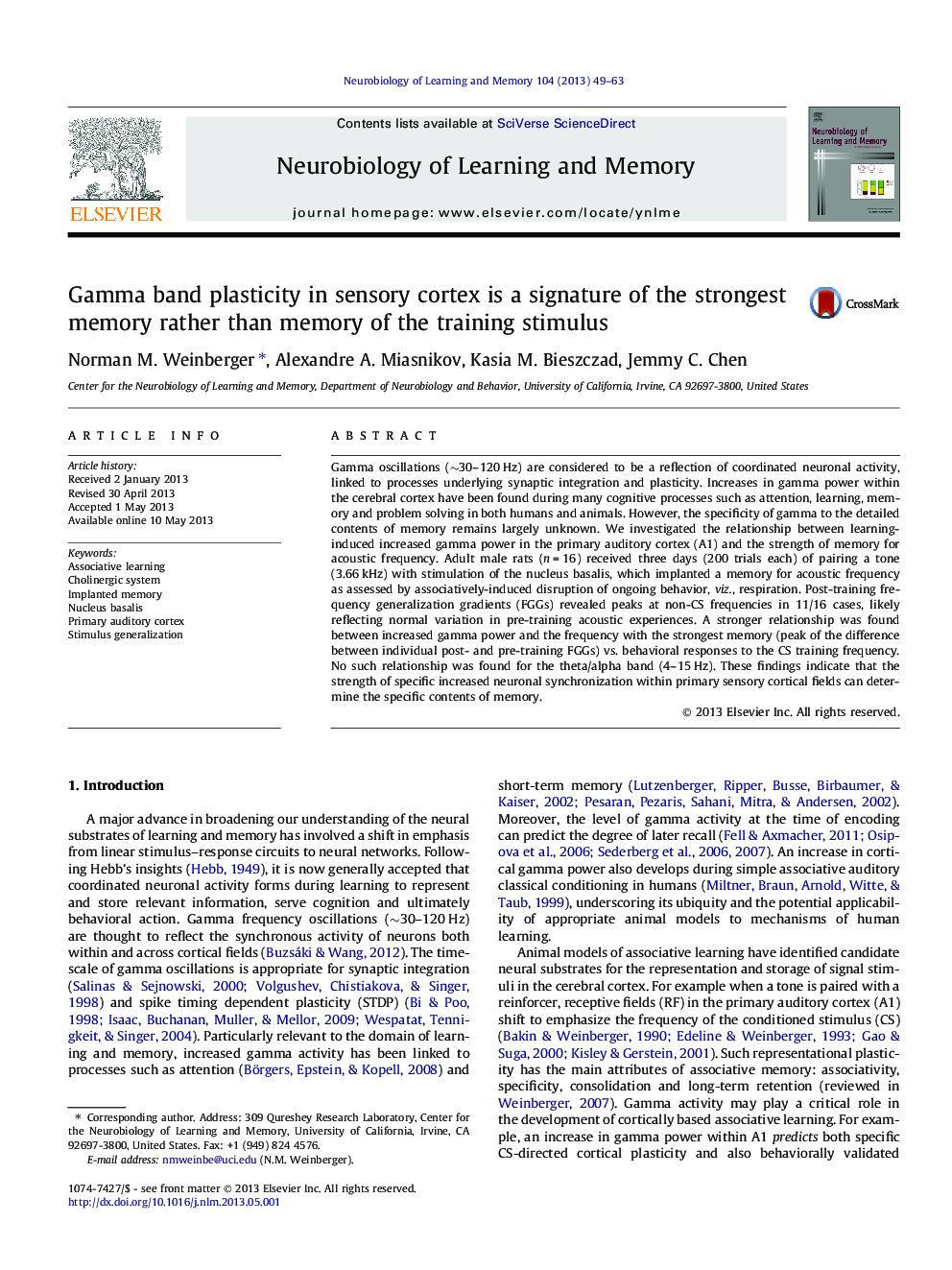| کد مقاله | کد نشریه | سال انتشار | مقاله انگلیسی | نسخه تمام متن |
|---|---|---|---|---|
| 7300474 | 1475171 | 2013 | 15 صفحه PDF | دانلود رایگان |
عنوان انگلیسی مقاله ISI
Gamma band plasticity in sensory cortex is a signature of the strongest memory rather than memory of the training stimulus
ترجمه فارسی عنوان
پلاستیک گاما باند در قشر حسی یک امضا از قویترین حافظه است تا حافظه محرک آموزش
دانلود مقاله + سفارش ترجمه
دانلود مقاله ISI انگلیسی
رایگان برای ایرانیان
کلمات کلیدی
موضوعات مرتبط
علوم زیستی و بیوفناوری
علم عصب شناسی
علوم اعصاب رفتاری
چکیده انگلیسی
Gamma oscillations (â¼30-120 Hz) are considered to be a reflection of coordinated neuronal activity, linked to processes underlying synaptic integration and plasticity. Increases in gamma power within the cerebral cortex have been found during many cognitive processes such as attention, learning, memory and problem solving in both humans and animals. However, the specificity of gamma to the detailed contents of memory remains largely unknown. We investigated the relationship between learning-induced increased gamma power in the primary auditory cortex (A1) and the strength of memory for acoustic frequency. Adult male rats (n = 16) received three days (200 trials each) of pairing a tone (3.66 kHz) with stimulation of the nucleus basalis, which implanted a memory for acoustic frequency as assessed by associatively-induced disruption of ongoing behavior, viz., respiration. Post-training frequency generalization gradients (FGGs) revealed peaks at non-CS frequencies in 11/16 cases, likely reflecting normal variation in pre-training acoustic experiences. A stronger relationship was found between increased gamma power and the frequency with the strongest memory (peak of the difference between individual post- and pre-training FGGs) vs. behavioral responses to the CS training frequency. No such relationship was found for the theta/alpha band (4-15 Hz). These findings indicate that the strength of specific increased neuronal synchronization within primary sensory cortical fields can determine the specific contents of memory.
ناشر
Database: Elsevier - ScienceDirect (ساینس دایرکت)
Journal: Neurobiology of Learning and Memory - Volume 104, September 2013, Pages 49-63
Journal: Neurobiology of Learning and Memory - Volume 104, September 2013, Pages 49-63
نویسندگان
Norman M. Weinberger, Alexandre A. Miasnikov, Kasia M. Bieszczad, Jemmy C. Chen,
